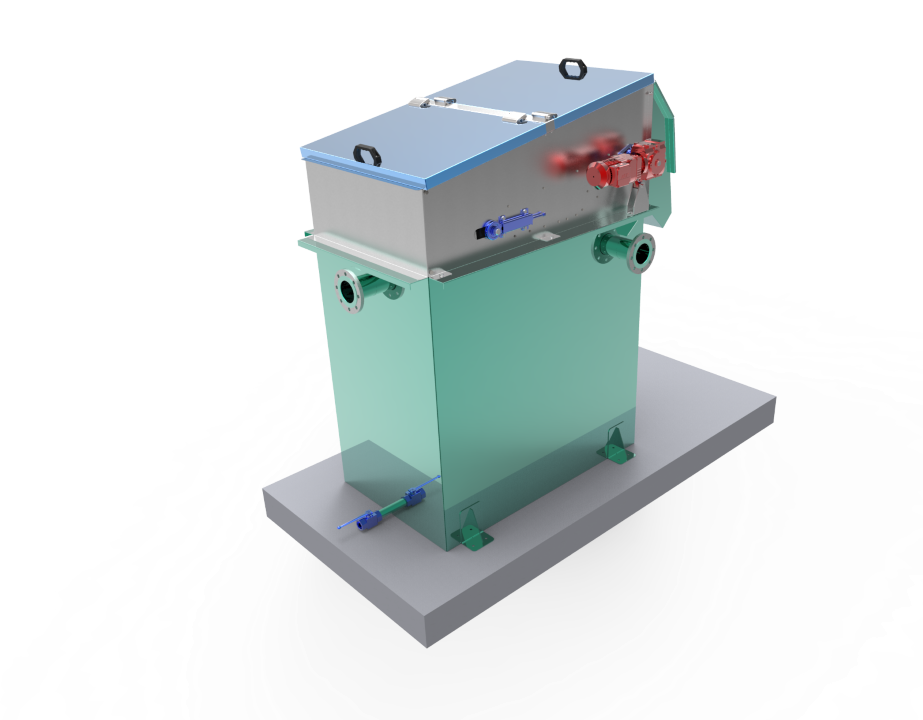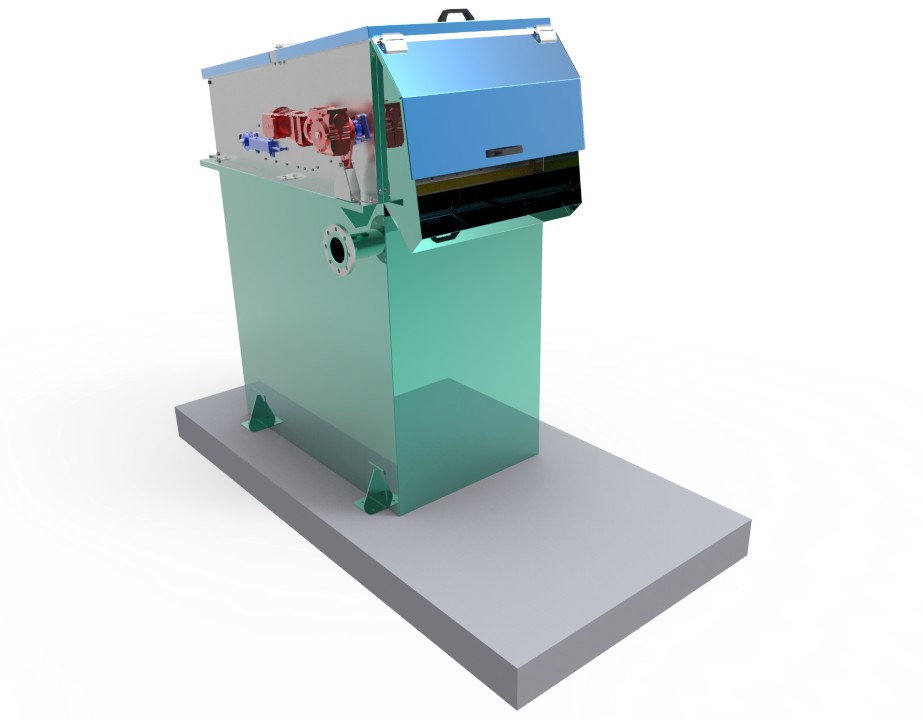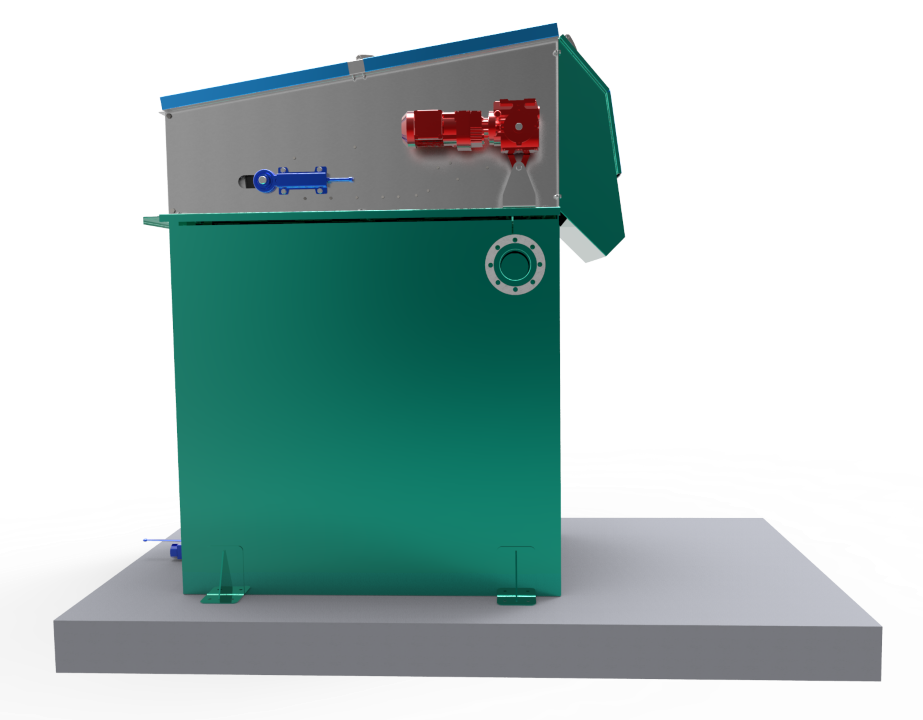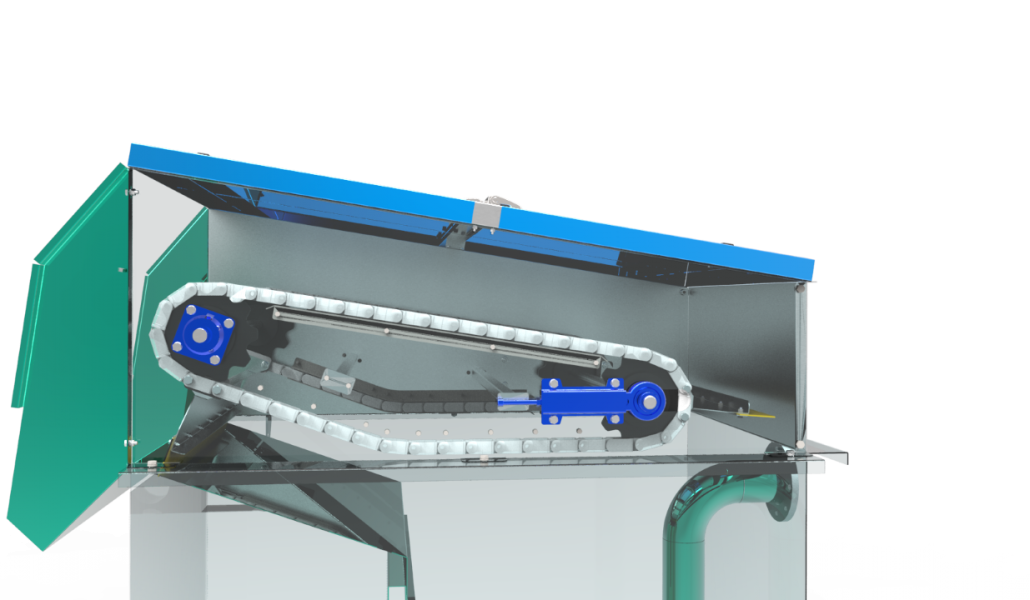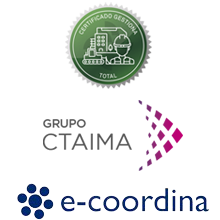Monobloc grease concentrator
Metallic tank, compact design.
Very efficient in extraction of scum and floating matter.
No submerged mechanisms or mobile parts.
A simple but efficient tensing system, by means of a “SCHAEFFLER” tensing device.
Removable rakes (easier maintenance)
Easy installation and connections.
“Low cost”.
DESIGN & APPLICATION:
The physical pre-treatment is one of the most important processes in a WWTP due to the fact that the posterior efficiency and overall output is directly affected by this stage.
In pre-treatment we can also receive all types of oil and grease which need to be extracted and separated efficiently. If this process is not carried out correctly the grease can cause many problems in the decanters where a layer is created on the surface. This layer makes sedimentation difficult as it attracts to the surface all small particles of organic material. As for purifying active sludge it can also create a problem in the correct aeration, reducing the transfer coefficient to 55-70% as the grease increases from 0 to 70mg/l. The grease also takes part in the production of BULKING, altering the sludge digestion process, the COD increases from 20% to 30% due to the amount of grease in the waste.
It’s now very clear to understand the importance of an efficient physical pre-treatment and our recommendation is summed up in the following diagram.
Our main mission is to separate, by means of physical processes (grease concentrator), the largest amount of solid waste and residue from the wastewater, for example, oil, grease, grit, etc…) which can create the following problems in the next stage of treatment:
- Caking on the anaerobic digesters because the scum has not been properly eliminated.
- Less efficiency in the biological process due to excess grease particles on entrance.
In order to improve and speed up the rising of the grease, we recommend the installation of an air injection system (OPTIONAL) which helps separate the grease so it can float to the surface and be removed. The rising speed of the grease bubbles can be between 3 & 4 mm/s. The surface scum is removed by means of scrapers.
In our wide range of products you can find the most adequate piece of machinery for your technical needs according to flow and grease to be treated from 5m3/h to 70m3/h. (For other flows please consult with our technical department).
The main components are: Metallic tank / entrance, exit and overflow tubes / grease retaining deflector / discharge ramp / drainage for tank emptying / raking system support frame / scum cleaning scrapers / driving axis / driven axis / scrapers transporting chain /scraper system protection lids.
All components in direct contact with water (apart from the scrapers which are manufactured in NBR (Nitrile) and the chains and pinions which are made from plastic materials) are manufactured in different quality stainless steel, following the PREN Corrosion (Pitting Resistance Equivalent Number) and according to our client’s requests. Once manufacturing is concluded we apply a pickling process by means of an acid bath. On demand, the chains and pinions can be manufactured in Stainless Steel, AISI-304/316.
3 processes are carried out with this equipment:
Process 1: The water comes in through the entrance tube foreseen in the settling area which is where is equally distributed enabling the grease to separate and float to the water surface.
Process 2: A mobile scraper system sweeps the grease and scum to the discharge ramp where they are removed.
Process 3: The clean water, free of grease circulates through the lower part of a deflecting bell which is installed along the tank (the grease is retained in the upper part) and once the water passes through the deflecting bell, comes out the exit tube.
Our equipment has a safety or protection system integrated in all the inspection lids. This element is of utmost importance in order to be able to fulfil standards 2006/42/CE from European Parliament and the del Consejo de 17 de mayo de 2006, relativa a las máquinas y por la que se modifica la Directiva 95/16/CE, which establishes that all members of the European Union are obliged to adopt standards in order to ensure technical safety for the machinery

